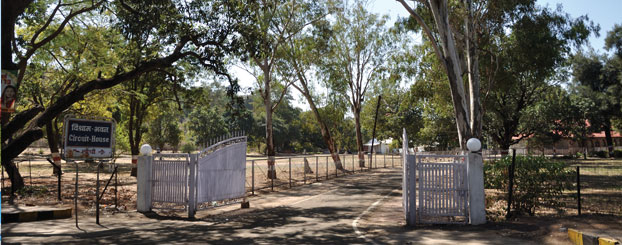We Indians take great pride in our British legacy, you know, things like the legislatures, the judicial system, the administrative machinery, the army, the transport and irrigation networks, the educational institutions, the hospitals and so on. These were the good things the British bequeathed us.

But there were many bad things also they left behind, like the idea that Government employees have a right to live off the taxpayer from the date they join service to the day they die; or the notion that ordinary people are generally inferior to those who rule them and therefore can be treated badly; the practice of segregation — special facilities for Government employees — and so on.
It is an extraordinary tribute to India’s ability at retention of all sorts of practices, right through the ages, that we have retained both the good things and the bad. But not everything the British left behind can be categorised as simply good or simply bad. There were some things that were neither good, nor bad — they were just there, a necessity then, and now a means for enjoying hidden perks by the employees of the government and the public sector, namely, the forerunners of the ubiquitous ‘guest houses.’
These were the circuit houses and the dak bungalows, exclusive and highly subsidised micro sized hotels built in picturesque locations where the white officials of the Raj stayed while on tour. The circuit houses were for the higher ranks and the dak bungalows for the lower ones. They were as essential to governing India as the police and army were because the Raj was run on the hoof, as it were.
Thanks to my father who joined the IAS just after Independence in 1949, we stayed in several of these, first in the Central Provinces and Berar and then, after the reorganisation of the States, the heavily forested Madhya Pradesh. The usual drill was that the Sahib arrived at dusk, hot and dusty from a long day on the road — first on horseback , then in jeeps when they became available — had tea on the spacious veranda, and took a walk around the grounds talking to the local minions like the tehsildar or patwari. These buildings could be on as much as five acres, so the strolls could last a while. The Sahib then bathed, had a drink, and a very simple but hot dinner. Sleep on clean sheets — and rough hairy blankets if it was winter — under a mosquito net, wake up for an early breakfast and then off again by 8 a m to the next leg of the tour.
While the Circuit Houses would be in district headquarters in what were called the Civil Lines, the Dak Bungalows were in the middle of dense forests. Many of these, even some Circuit Houses, were still without electricity until the 1960s, or any kind of modern conveniences, for that matter. Many of these had some very strange and dark bathrooms. The night soil carriers were as much a part of the scene as were the gharriewala and the khansamah. The latter, my father told us, were a source of many delectable and salacious stories about the love life of the Sahibs who would bring along their girlfriends for an amorous week or so while the Memsahib was away in England. They have remained a place for comfortable liaisons between male and female officers who were attracted to each other.
Just how off the beaten track and convenient these places were can be seen from the fact that there was a place called Chikaldah near Amaravati which is now in Maharashtra. My parents said leopards used to sleep at night on the verandah. I was too young to remember that, but I do remember the Circuit House in Rewa, set deep inside a huge compound. It had huge tiger heads on the walls even in the bedrooms, which was quite scary at night. In one circuit house, in Chattarpur, which is the district headquarters for Khajuraho, the bathroom was as big as a large drawing room in modern flats. The Circuit House in Indore was massive and set on a very large estate. The one in Hoshangabad was set on a small rise over the Narmada. A set of stone steps from the garden led down to the river.
Many had ghost stories attached to them. The Dak Bungalow at a place called Misrodh near Bhopal had the story of one Miss Rod — Misrodh, get it? — who committed suicide after her heart was broken by some cad of an Englishman. Then there is the story of a circuit house near Jabalpur. An Englishman’s ghost would visit there over Christmas. He had killed himself out of sheer loneliness.
Sometime in the early 1980s, I had occasion to stay there as a guest of the MP government and was greatly saddened to see its state. In the old days, they used to have old stone flooring, huge heavy teak or rosewood beds, hat racks, and ancient cane furniture on the verandas upon which many a distinguished bottom had rested. All that is now gone, replaced by cheap PWD tiles, plywood beds and plastic furniture.
As with so much else the idea has remained but in a mutated form. We Indians are like that only, you see.





